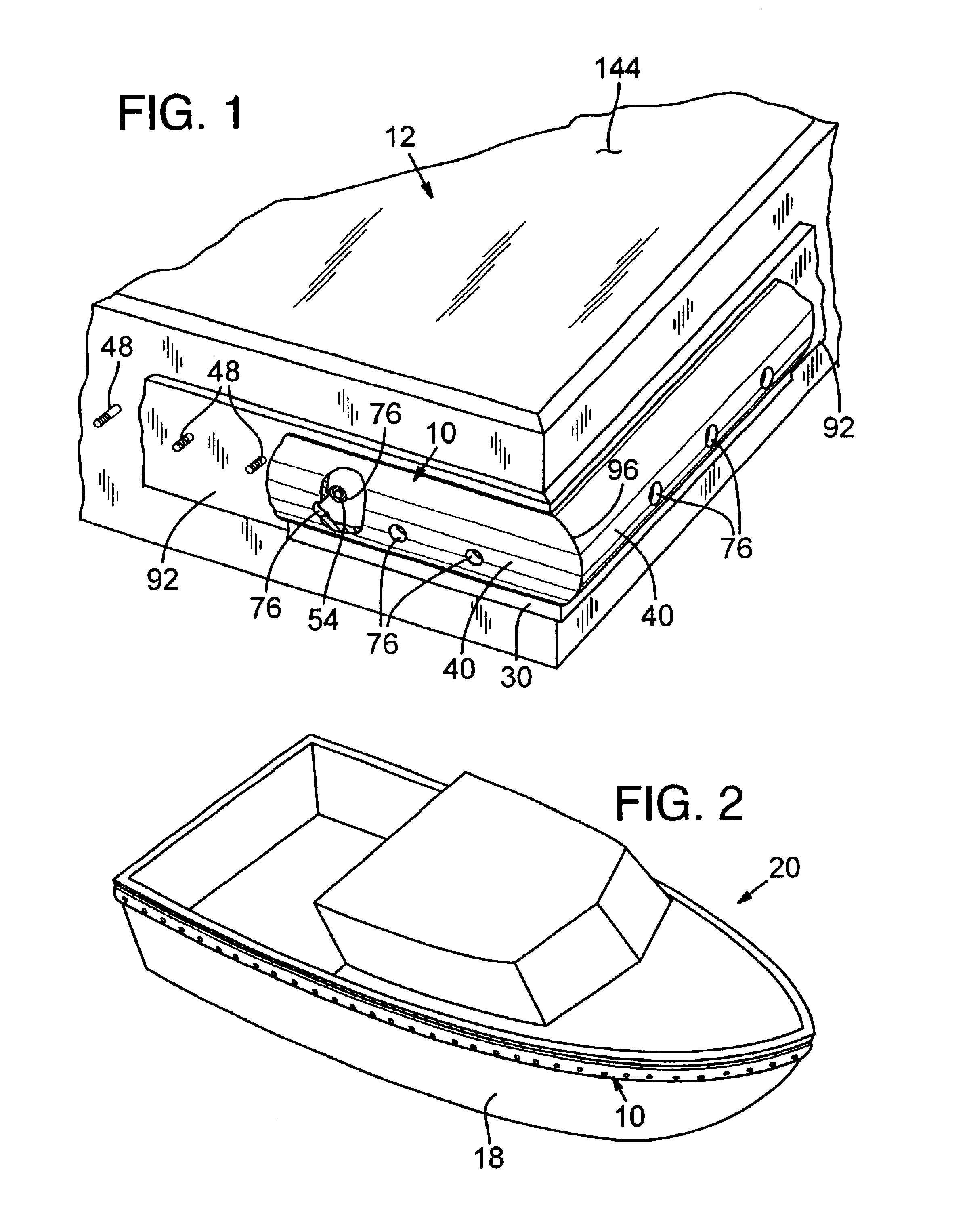Fender with leaf spring
a technology of leaf springs and fenders, applied in the field of fenders, can solve the problems of steel permanently deformation, impact load concentration, and the vessel moving away from the piling surface, so as to improve the appearance and/or resistance of the fender to ultraviolet radiation, increase the usable area of the deck or dock, and enhance safety
- Summary
- Abstract
- Description
- Claims
- Application Information
AI Technical Summary
Benefits of technology
Problems solved by technology
Method used
Image
Examples
Embodiment Construction
[0023]FIG. 1 is a partial fragmentary view of a fender 10 in accordance with a first preferred embodiment shown mounted to a dock 12. FIG. 2 shows fender 10 mounted to a hull 18 of a boat 20. Although FIGS. 1 and 2 show use of fender 10 in a marine setting, those skilled in the art will understand that fender 10 has utility in any environment or application where there is a need to protect an object from damage due to collisions with another object, regardless of whether one of the objects is stationary. For example, fenders in accordance with the various embodiments described herein are also useful for delivery trucks and vans, warehouse loading docks, automobiles, trains, train platforms, subway cars, subway platforms, pushcarts, walls, seawalls, bridge footings, locks, and any other vehicles, objects, structures, and environments in which collisions are common and in which, if not protected, the objects are subject to damage during collisions. For convenience, and without limitin...
PUM
 Login to View More
Login to View More Abstract
Description
Claims
Application Information
 Login to View More
Login to View More - R&D
- Intellectual Property
- Life Sciences
- Materials
- Tech Scout
- Unparalleled Data Quality
- Higher Quality Content
- 60% Fewer Hallucinations
Browse by: Latest US Patents, China's latest patents, Technical Efficacy Thesaurus, Application Domain, Technology Topic, Popular Technical Reports.
© 2025 PatSnap. All rights reserved.Legal|Privacy policy|Modern Slavery Act Transparency Statement|Sitemap|About US| Contact US: help@patsnap.com



